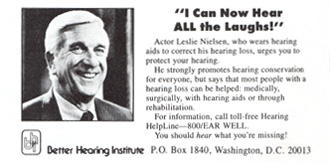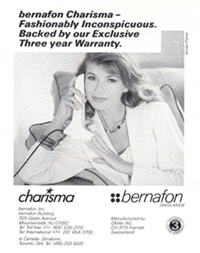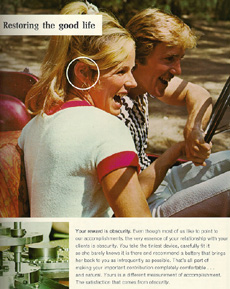Marketing of Hearing Devices
Technological innovation was a primary focus of hearing aid marketing during the latter half of the 20th century. Integrated circuits, directional microphones, and the introduction of zinc air batteries in 1977, along with an increased sense of consumerism led to new strategies for marketing of hearing aids. Miniaturization of hearing aids led to the canal type hearing aids which allowed hearing aids to be completely worn in the ear. More recent developments such as directional microphones, flexible digital programming and adaptive filtering provide users with the best of both worlds – an effective hearing aid that is also virtually unnoticeable.
As in the 1950s the use of prominent persons helped in increasing awareness of hearing loss and encouraging others to wear hearing aids. When Ronald Reagan first appeared in public in 1983 wearing an in-the-ear hearing aid, sales of hearing aid increased. Actors such as Lorne Greene, Nanette Fabray, Tom Bosley and Leslie Nielsen were used in advertising campaigns for promotion of healthy hearing and hearing aids.
Durability continued to be emphasized, as in this 1978 advertisement for Oticon hearing aids.
And, as noted in these advertisements, concealment is still a common theme in marketing today.
|
|
|
|
<< Previous | 1 | 2 | 3 | 4





